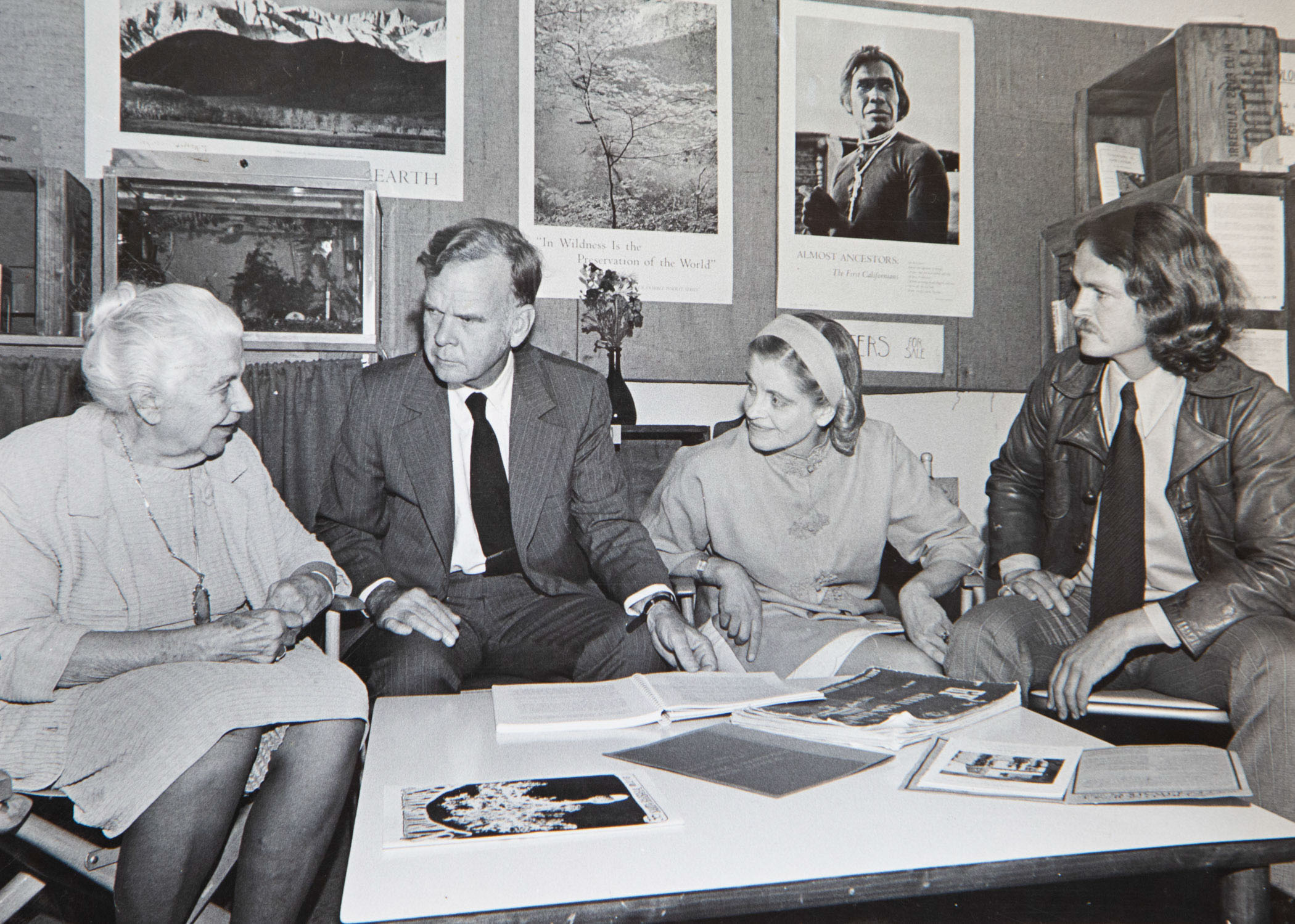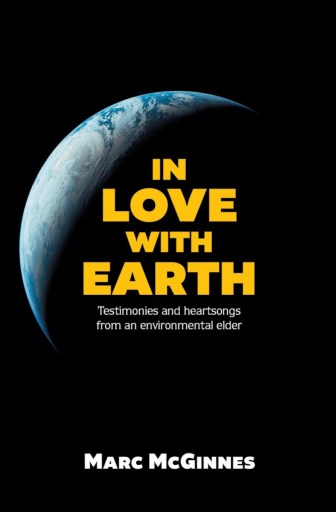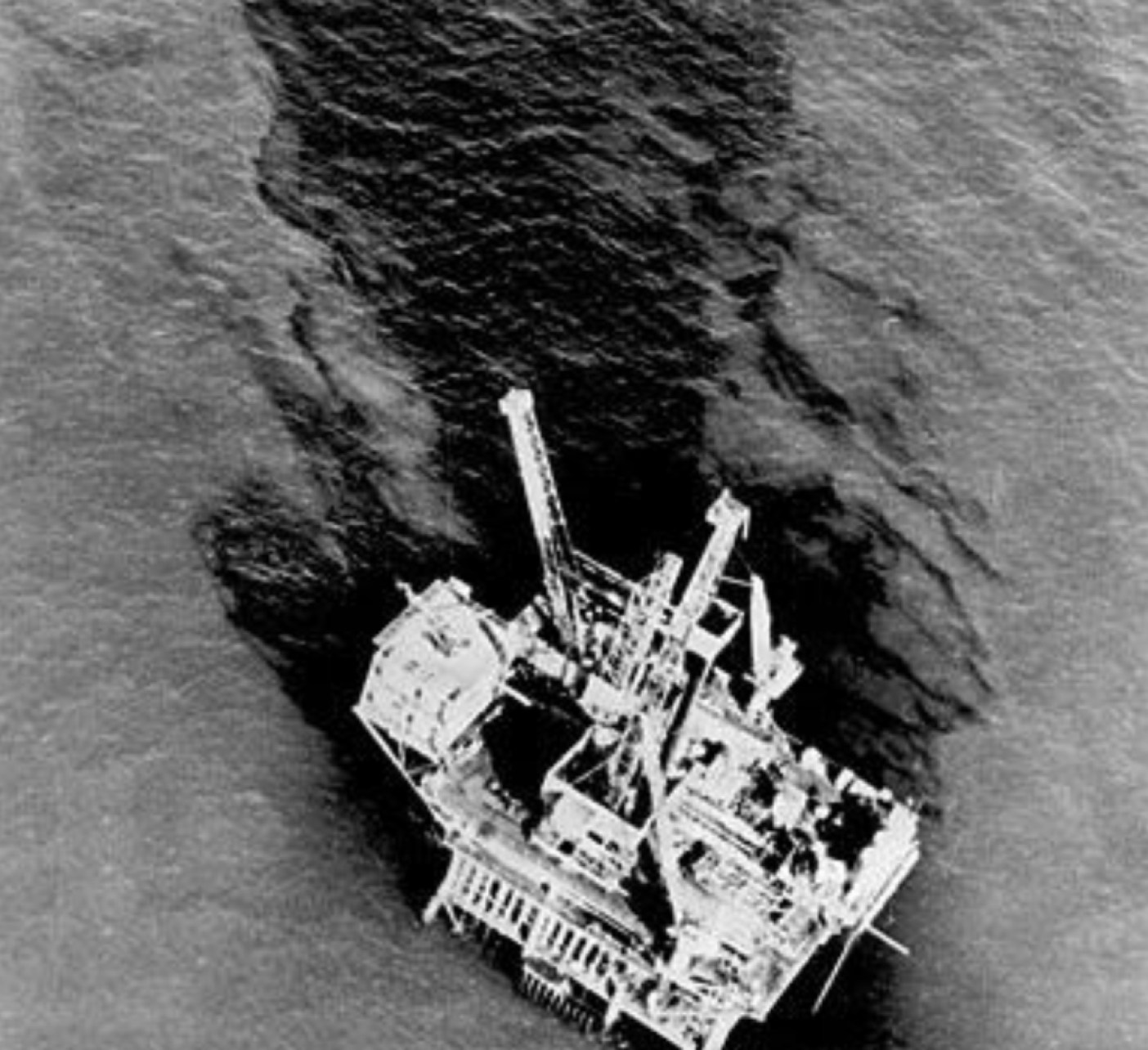Book Excerpt: ‘In Love with Earth’
Looking Back on the 1969 Oil Spill and the Rise of Environmentalism

The following is an excerpt from the newly released In Love with Earth, written by Marc McGinnes, cofounder of the Community Environmental Council, the Environmental Defense Center, the Peaceful Resolutions Institute, and the Community Mediation Council, and a longtime faculty member of the Environmental Studies Program at UCSB.
In early March of 1969, l got a phone call that set my life on a new course.
I was in my law office in San Francisco. A case file lay open on my desk, and I held my Dictaphone, just about to record some notes, when my secretary buzzed over the intercom, “There’s a [Rep.] Pete McCloskey from Washington, D.C., on the line for you.” I put down the recorder, reached for the telephone and heard Pete say, “Marc, have you heard about this oil platform blowout in Santa Barbara?”
“Hi, Pete. Yes, I read some of the news about it.”
“Well, I think you should get down there as quickly as you can and get involved. This is going to open up a whole new field of law. I’m at work right now helping to draft new legislation that will fundamentally change how governmental decisions affecting the environment are made. Young lawyers like you are going to be needed to enforce it in the courts. It’s a National Environmental Policy Act, and we want to be sure that similar state laws are enacted and enforced.”
“Yes, but …”
“No ‘buts’ about it, Marc. No time to waste. Get down there as soon as you can.”
I put down the phone, opened my arms to the heavens and whooped. I crossed the room to the window, opened it and shouted “Yes!” When I turned around, my secretary was staring at me with a mixture of alarm and astonishment.
That night, [my wife] Kathy and I decided to make the move. The next morning, I called Pete. He asked, “Do you know anybody down there, Marc? Do you have any contacts with any lawyers?”

“No. Not a soul.”
“Well, start as soon as you can. I’ll see what I can do. But I want to let you know, this is really important. We need to make sure that the word coming out of Santa Barbara is stronger than just ‘Get Oil Out!’ The bigger goal is to launch a powerful environmental protection movement across the whole country.”
Pete McCloskey was then and still is (going strong at age 90) an Earthangel, the first of many whom it has been a blessing to work with over the years to create and sustain such a movement.
The blowout at Union Oil’s Platform A occurred on January 28, 1969, and in response, the citizens of Santa Barbara were angry as hornets. They had every right to be. Before the offshore rigs were built, the locals had called for public hearings concerning the safety issues inherent to this kind of oil production. Those requests for hearings were denied by federal officials, who were in a rush to get started. The oil companies had paid millions of dollars to the federal government for the leases and, as Stewart Udall (Secretary of the Interior under Kennedy and Johnson) later explained, the government urgently needed those lease fees to help pay for the Vietnam War.
So Udall looked the other way as the oil companies moved aggressively forward with these offshore rigs, and ultimately it was Udall (undoubtedly at the direction of the president) who made the decision to approve drilling operations. That decision was premature, as the events of late January demonstrated.
The blowout, which spewed more than three million gallons of crude oil and gas into the Santa Barbara Channel, occurred when the drill being operated from the platform penetrated to a depth that was not protected by the casing needed to contain the pressure of the materials below. The oil came exploding out, reached the surface and began to spread. It continued to spread over the next several months. Winds and tide moved it about, and soon it spread all along the shore of the South Coast.
Sea life was deeply impacted. Birds were coated in oil, rendering them helplessly unable to fly or dive. The birds became emblematic of the disaster because they generated the most compelling images. Poignant scenes of oil-covered birds helped to make the spill a national media event carried by major news organizations into the homes of people across the country.
As the efforts to stop the spill failed, the damage continued and so did the news coverage. At that point in time it was the largest water pollution incident in United States history. This created a new national awareness of environmental abuse and set into motion seminal laws, policy and a change in social consciousness.

In that moment, journalism served as the fourth estate. There were several prominent journalists covering the event at the New York Times, the Chicago Tribune andthe Los Angeles Times. Locally, Bob Sollen worked for the Santa Barbara News-Press, performing at the hub of this seminal event and briefing the national newspapers, sharing his photographs and accounts.
In addition to portraying the environmental devastation, the news media also covered representatives and dignitaries who visited the scene of the disaster. President Nixon arrived by helicopter, stepped out near the black gunk that had come ashore, and took pains to avoid sullying his wingtip shoes in the grime. Nixon was soon followed by Secretary of the Interior Walter Hickel and a whole host of other federal and state government officials who showed up to sternly deplore the situation. Press releases came out of governmental offices, and reporters diligently covered the saga. For months, visiting representatives and the national media audience watched the angry citizens of Santa Barbara vent their fury at the federal officials who had ignored their warnings and betrayed their trust.
The new National Environmental Policy Act (NEPA) that Pete had mentioned would require developers to assess the environmental impacts of their projects in advance and submit this information for public review and potential court approval before moving forward. Had this requirement been in effect prior to the government’s approval of the plan to begin drilling operations in the Santa Barbara Channel, the blowout on Platform A would almost certainly have been avoided.
At the time, Kathy was pregnant and our financial resources were thin. But in light of my having fallen in love with the Earth, as well as with her, we knew it was exactly what we should do. In a way, our son’s gestation was part of my new way of seeing things. I was ready to defend the Earth. Within days of the birth of our son Skye, we moved to Santa Barbara.




You must be logged in to post a comment.